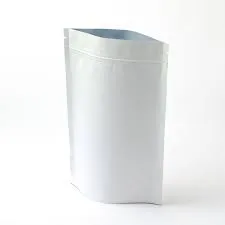- Afrikaans
- Albanian
- Amharic
- Arabic
- Armenian
- Azerbaijani
- Basque
- Belarusian
- Bengali
- Bosnian
- Bulgarian
- Catalan
- Cebuano
- chinese_simplified
- chinese_traditional
- Corsican
- Croatian
- Czech
- Danish
- Dutch
- English
- Esperanto
- Estonian
- Finnish
- French
- Frisian
- Galician
- Georgian
- German
- Greek
- Gujarati
- haitian_creole
- hausa
- hawaiian
- Hebrew
- Hindi
- Miao
- Hungarian
- Icelandic
- igbo
- Indonesian
- irish
- Italian
- Japanese
- Javanese
- Kannada
- kazakh
- Khmer
- Rwandese
- Korean
- Kurdish
- Kyrgyz
- Lao
- Latin
- Latvian
- Lithuanian
- Luxembourgish
- Macedonian
- Malgashi
- Malay
- Malayalam
- Maltese
- Maori
- Marathi
- Mongolian
- Myanmar
- Nepali
- Norwegian
- Norwegian
- Occitan
- Pashto
- Persian
- Polish
- Portuguese
- Punjabi
- Romanian
- Russian
- Samoan
- scottish-gaelic
- Serbian
- Sesotho
- Shona
- Sindhi
- Sinhala
- Slovak
- Slovenian
- Somali
- Spanish
- Sundanese
- Swahili
- Swedish
- Tagalog
- Tajik
- Tamil
- Tatar
- Telugu
- Thai
- Turkish
- Turkmen
- Ukrainian
- Urdu
- Uighur
- Uzbek
- Vietnamese
- Welsh
- Bantu
- Yiddish
- Yoruba
- Zulu
Chipboard Boxes for Versatile Storage and Packing Solutions
The Versatility and Sustainability of Chipboard Boxes
In recent years, the packaging industry has witnessed a significant transformation, driven by the need for sustainable solutions that do not compromise on quality. One of the standout options in this landscape is chipboard boxes. These boxes, made from compressed recycled paper fibers, are garnering attention not only for their eco-friendly properties but also for their versatility in a variety of applications.
Chipboard, also known as paperboard, is an engineered board that is thicker than standard paper but thinner than cardboard. Its manufacturing process primarily utilizes recycled materials, making it a popular choice among environmentally-conscious consumers and businesses alike. As global awareness around sustainability rises, more companies are seeking to align their packaging with eco-friendly practices. Chipboard boxes fit perfectly into this ethos, serving as a practical alternative to plastic and other non-biodegradable materials.
The Versatility and Sustainability of Chipboard Boxes
Moreover, the printing capabilities of chipboard boxes are impressive. They can be easily printed on, allowing businesses to showcase their branding effectively. High-quality graphics can be applied, making chipboard an attractive option for marketing purposes. The tactile quality of these boxes can also enhance the unboxing experience, which is crucial in today’s e-commerce-driven market. A well-designed chipboard box can transform a simple product delivery into a memorable interaction with the customer.
boxes chipboard

Another advantage of chipboard is its lightweight nature, which aids in reducing shipping costs. By using lighter packaging materials, businesses can lower their overall shipping expenses while minimizing their carbon footprint. This characteristic offers a double benefit – it saves money and supports sustainability goals. Additionally, chipboard boxes are stackable and can be easily stored when not in use, making them a practical solution for businesses dealing with space limitations.
Despite these numerous advantages, it’s important to address common misconceptions regarding the durability of chipboard boxes. Some may perceive them as inferior to traditional cardboard due to their lighter weight. However, chipboard is designed to be robust and can withstand significant pressure and weight. This strength ensures that it can protect products during transport while maintaining structural integrity. From electronics to clothing, chipboard has proven its capabilities in safely housing a wide range of items.
The environmental impact of chipboard boxes is another topic worth exploring. Given that they comprise recycled materials, chipboard boxes contribute to the circular economy. Their recyclability further extends their lifecycle, thus reducing the volume of waste destined for landfills. The energy consumption linked to the production of chipboard is considerably lower than that of producing new plastic packaging, making chipboard a far more sustainable option.
In conclusion, chipboard boxes are a prime example of how innovation in packaging can foster sustainability and versatility in the modern marketplace. Their lightweight structure, durability, and customization options make them an excellent choice for various applications. As consumers increasingly demand environmentally friendly packaging solutions, chipboard boxes stand out as a responsible option that meets the diverse needs of businesses and helps protect our planet. Embracing chipboard not only enhances brand visibility and operational efficiency but also marks a commitment to sustainability in today’s rapidly evolving world. Whether shipping products or delivering gifts, chipboard boxes are an ideal solution for those looking to make a positive impact.













